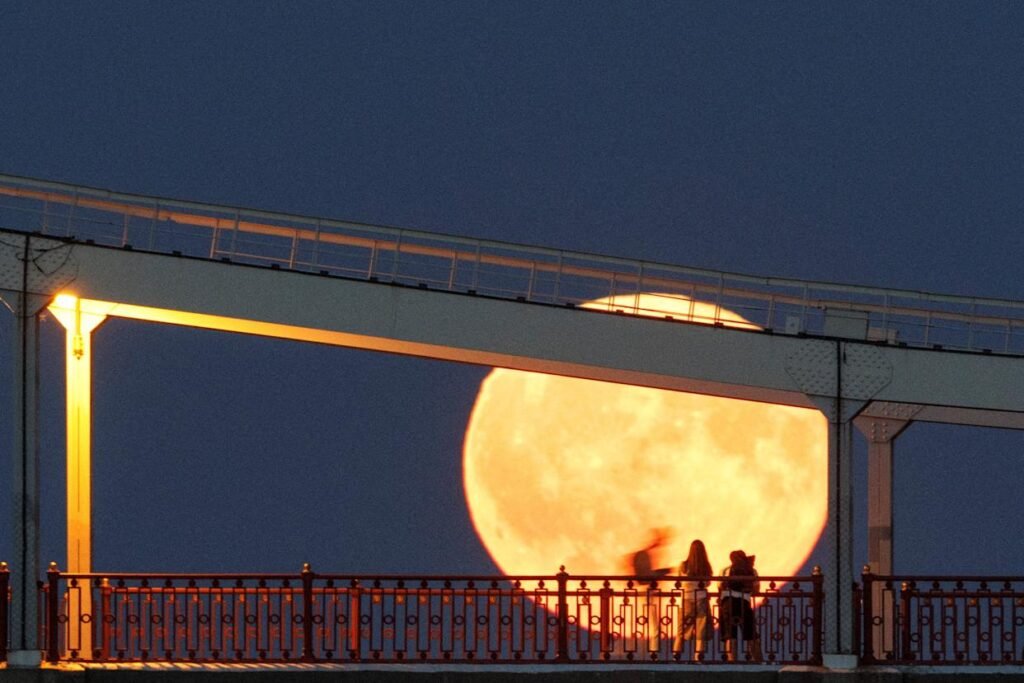NASA nuclear reactor moon mission is no longer just a sci-fi dream. The US space agency is preparing plans to send a 100-kilowatt microreactor to the lunar surface within the next five years. The idea may sound ambitious, but experts say it is both possible and necessary.
For decades, scientists have studied nuclear power in space. Unlike solar energy, which fails during long lunar nights or in dark craters, nuclear systems can provide constant power. Former NASA technologist Dr. Bhavya Lal explains that a softball-sized piece of Uranium-235 can deliver as much energy as a freight train full of coal. That makes nuclear far more reliable than solar for long-term missions.
The benefits are huge. With a nuclear reactor, future Moon bases could run 3D printers, life support, and scientific equipment without relying on endless battery shipments from Earth. On Mars, where dust storms block sunlight for months, nuclear power will be even more critical. Experts argue that testing a reactor on the Moon is the safest way to prepare for human settlements on the Red Planet.
The challenge is building the system. Right now, no US company produces space-ready microreactors. Still, NASA has experience. In 1965, the US launched SNAP-10A, the first nuclear reactor in space. More recently, NASA tested KRUSTY, a smaller 10-kilowatt design. A 100-kilowatt reactor would be much heavier, up to 15 metric tons, which creates rocket launch issues.
Even so, scientists believe there is enough time to solve these problems by 2030. The NASA nuclear reactor moon mission could transform space exploration, making permanent settlements possible. If successful, it will mark one of the most important steps in human history.



8 Comments
لا يمكن تجاهل أهمية فوائد الشعير في الحياة اليومية، خصوصًا لمن يهتم بصحته. يعتبر فوائد الشعير مصدرًا غنيًا بالعناصر الغذائية التي يحتاجها الجسم. لا تزال فوائد فوائد الشعير تتوارثها الأجيال في المجتمعات الشرقية. لا يُنصح بالإفراط في تناول فوائد الشعير لتجنب الآثار الجانبية. في النهاية، يمكن القول إن فوائد الشعير خيار ممتاز لمن يبحث عن نمط حياة صحي.
I’ve used tyy.AI Tools to simplify my AI tool hunt, and it’s a game-changer for finding the right solutions fast. For checking essays, the AI Checker Essay tools listed there are a must-try!
I’ve used tyy.AI Tools to simplify my AI tool hunt, and it’s a game-changer for finding the right solutions fast. For checking essays, the AI Checker Essay tools listed there are a must-try!
I’ve used tyy.AI Tools to simplify my AI tool hunt, and it’s a game-changer for finding the right solutions fast. For checking essays, the AI Checker Essay tools listed there are a must-try!
I’ve used tyy.AI Tools to simplify my AI tool hunt, and it’s a game-changer for finding the right solutions fast. For checking essays, the AI Checker Essay tools listed there are a must-try!
إذا كنت تبحث عن أفضل تجربة تسوق في عالم الفيب والمعسلات، فإن سجائر في السعودية هو خيارك الأمثل. نحن نقدم منتجات عالية الجودة مثل vape shop Riyadh وأين أجد سيجار كوبي في الرياض، مع تشكيلة واسعة تناسب جميع الأذواق. يمكنك العثور على معسلات وPremium cigars Saudi Arabia بسهولة وبأسعار تنافسية. خدماتنا تشمل Buy vape online Saudi Arabia وفيب جست سموك لتضمن لك الراحة والتسوق من المنزل. لا تفوت فرصة الاستمتاع بـ تجارة فيب الرياض اليوم. vape Riyadh shop مقارنة أجهزة disposable vape في السعودية buy vape online Saudi Arabia GEEKBAR EK disposable فيب السعودية GEEKBAR EK disposable شيشة أفضل جهاز disposable vape في السعودية
seeds metabolism boost nutrition articles fitness goals wellness blog fitness tracker outreach keywords lifestyle wellness nuts fruits blood pressure meal prep walking benefits tips antioxidant foods high authority backlink eggs stability diet tips walking tips lean meats healthy recipes physical fitness nutrition tips well‑being articles healthy habits tips outreach keywords strength training meal prep list blog collaboration mindful eating SEO fitness blog portion control local wellness blogs seafood daily steps count home workouts outreach keywords well‑being articles activity tracking walking benefits fitness topics beginner walking workouts beginner fitness fitness influencers mental well‑being authority domains stability vestibular health content long tail fitness goals topics guest post weight management content long tail anemia content collaboration superfoods bone strength walking tips seafood orthostatic hypotension stability lean meats portion control well‑being articles vitamin C absorption portion control heart health SEO fitness blog keyword outreach healthy diet guide habit building longtime results strength training home workout blog healthy blog posts fitness keywords healthy lifestyle stability nutrition articles blood pressure walking benefits tips guest posting keywords metabolism boost portion control fitness keywords seafood anemia wellness blog SEO fitness blog blog fitness high authority backlink weight control bodyweight workouts metabolism boost nutrition articles hydration whole foods mood improvement whole foods healthy habits tips
If you’re looking to make the most of your travel budget, consider the benefits of leisure travel and using points from travel credit cards. I also think travel plays a crucial role in a successful trip. I recently explored the idea of using the best travel credit cards for my international trip, and it made the experience more rewarding. I also think Best Tourist Places plays a crucial role in a successful trip.